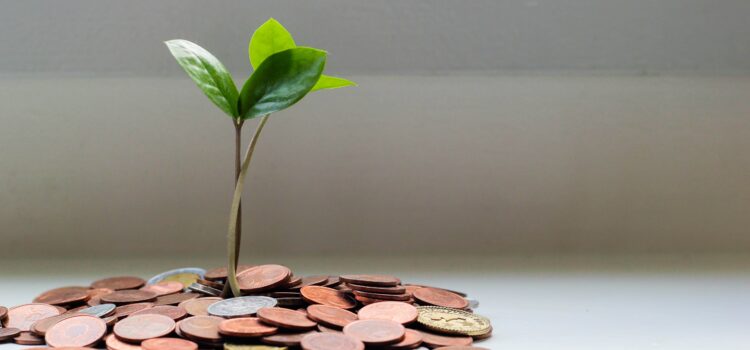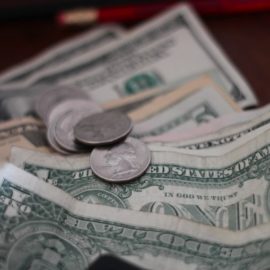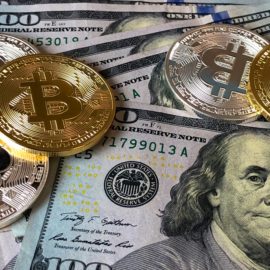

This article is an excerpt from the Shortform book guide to "Naked Economics" by Charles J. Wheelan. Shortform has the world's best summaries and analyses of books you should be reading.
Like this article? Sign up for a free trial here .
What reflects the health of an economy? What markers do economists use to measure the strength of a country’s economy?
Sometimes, an economy functions well: It grows at a healthy rate that allows many people to earn a good living. But sometimes, it suffers a period of stagnation or contraction, when people find it harder to survive or to thrive within the market. There are several markers of economic health including GDP (gross domestic product), unemployment rates, Gini coefficient, etc.
In this article, we’ll explore how economists measure the health of an economy, what causes an economy to fall into recessions, and how governments can respond to recessions to fix them (or better yet, to prevent them).
GDP as a Measure of the Health of an Economy
In order to properly evaluate the health of an economy, economists must figure out how to measure economies in a way that allows for effective comparison. There are several markers of economic health that they look at, but the primary one is an economy’s gross domestic product, or GDP. GDP summarizes the value of all the goods and services an economy produces. It’s the number that people generally refer to when they talk about a country’s growth: If you say the U.S. grew 3 percent this year, what you mean is that the U.S. produced 3 percent more goods and services this year than it did last year.
To properly measure the wealth of a country, you must also consider its population, which is why economists often look at GDP per capita—the GDP of a country divided by its population— rather than simply GDP. If you don’t consider population, you can end up with misleading numbers. For example, India has a GDP of $3.3 trillion while Israel’s GDP is $201 billion. Without taking population into consideration, you might say that India is the wealthier country. However, because India’s population is so much larger than Israel’s (over a billion compared to several million), the GDP per capita works out to be approximately $2,900 in India and $28,300 in Israel, indicating that Israel’s population is better off.
GDP Misses Some Important Measures
While GDP does a good job of showing an overall picture of an economy’s health, it misses a number of important factors that determine whether or not an economy is functioning well and if the people operating within that economy are happy:
- GDP does not account for unpaid work. If you forgo a paying job to raise your children, cook meals for your family, and care for your elderly parents, that work isn’t included in the GDP.
- GDP does not account for leisure activities. If you take time off work to spend the day hiking in the woods, you subtract from your country’s GDP. On paper, this means you’re worse off, while in real life, your ability to do such leisure activities shows you have a good standard of living.
- GDP does not judge the methods used to create goods and services. A country that produces lots of things but destroys its environment and burns through its own natural resources to do so (as China is often accused of doing) isn’t taking into account the negative effect that its growth will have on its long-term health. In fact, environmental degradation can boost GDP: When a government has to pay for a clean-up of a factory’s pollution, it adds to the country’s GDP numbers.
- GDP does not judge the value of the goods and services a country provides. If a country has a lot of prisons, servicing those prisons adds to that country’s GDP, even though it’s not a good thing for a country to have or need a lot of prisons.
- GDP does not account for income distribution. A country’s GDP might be high but only because a small segment of society is fabulously wealthy while others are poor—an unequal situation that does not indicate a strong economy.
- GDP does not account for non-monetary factors that influence people’s happiness, such as happy marriages or short commutes to work, both of which can have a stronger influence on overall life satisfaction than a simple income level.
Other Measures of Economic Health
In addition to GDP, there are some other numbers that economists often refer to in order to judge how an economy is faring. These include:
- Unemployment rate: This number measures the percentage of people who don’t have a job but are looking for one. In general, a lower unemployment rate indicates a stronger economy, because there are plenty of jobs to go around. However, a too-low unemployment rate indicates a lack of skilled workers, which can hold back an economy’s growth.
- Poverty rate: This number measures the percentage of a population living below a certain level of income. A high poverty rate typically indicates a poorly run economy.
- Gini coefficient: This number uses a scale of zero to 100 to measure income inequality. A score of zero indicates total equality, where every worker earns the same amount. A score of 100 indicates total inequality, where one worker earns all the income. By this measure, America has grown more unequal over time: In 1950, the country scored 37.9, while in 2007, it scored 45. Economies that are more equal tend to have longer-term stability.
How Do Recessions Happen?
Recessions are periods of time during which an economy’s GDP shrinks. They’re generally caused by a shock to the system—something unexpected and bad happening. Shocks might be the bursting of stock market or real estate bubbles (when exorbitant price increases are followed by sudden and devastating losses), a steep rise in oil prices (each of which preceded, respectively, the Great Depression of 1929, the financial crisis of 2007/2008, and the United States’ recession of 1973). Often a combination of causes lead to recession: For example, the American slowdown beginning in 2001 was sparked by the “dotcom bubble” of overinvestment in technology stocks, and was later exacerbated by the terrorist attacks of September 11.
Because every part of modern markets are interconnected, the failure of one part of the economy can quickly cause other parts to fail as well. For example, if your income suddenly drops because of a stock market correction, you will respond by spending less money. Your decreased spending makes other people’s income decrease, who then respond by also spending less money, which spreads the pain throughout more and more sectors of the market.
When this kind of slowdown reaches banks, the entire economy can quickly freeze up. Our economy is very much based on credit: Many of the most basic business transactions require individuals and firms to borrow money from banks. When they can’t, businesses can no longer invest or conduct business with each other, and individuals can’t borrow money to pay for things like houses, cars, or college. Everything grinds to a halt.
This is essentially what happened during the financial crisis that began in 2007. First, homeowners leveraged themselves highly: they took on more debt than they could finance in order to pay for new homes, fueling a property bubble. They did so on the understanding that if they found themselves unable to repay their mortgages, they could simply sell their houses and pay off the debt. However, this strategy could only work if home values continued to rise, and when the property bubble burst and home values dropped, people found themselves unable to pay their mortgages and also unable to sell their homes for enough money to cover their debts.
The resulting wave of foreclosures devastated investment banks. These banks were not only highly leveraged with mortgages but also with the credit default swaps we discussed earlier, which amplified the effects of homeowners defaulting on their mortgages. Lehman Brothers, a major investment bank, declared bankruptcy, and the global financial market froze as panicked banks stopped lending people money.

———End of Preview———
Like what you just read? Read the rest of the world's best book summary and analysis of Charles J. Wheelan's "Naked Economics" at Shortform .
Here's what you'll find in our full Naked Economics summary :
- An explanation of economics that anyone can understand
- How governments and firms can use incentives to foster a healthy economy
- How and why people behave in certain ways






